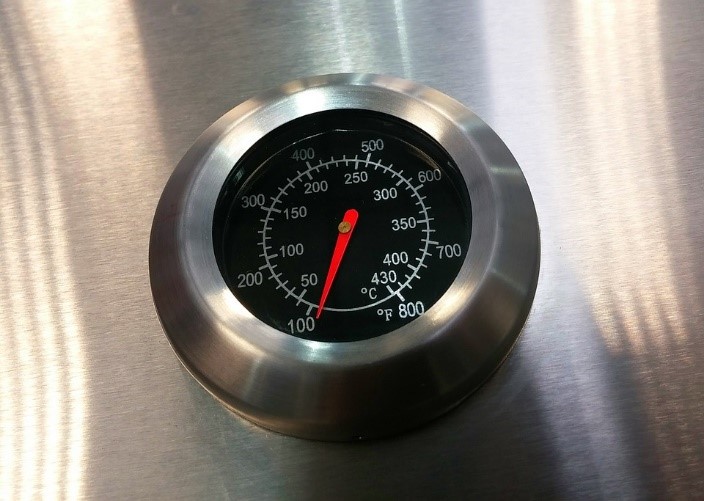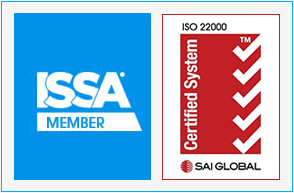Why is food hygiene training important?
Food safety training is extremely important for many different reasons in a number of industries. From those who sell food at retail, to those working directly in the production of food, it is crucial to have your workers understand how to safely work with food that is intended for human consumption. There are different levels when it comes to food safety training, with many different elements, which are often tailored towards the industry and role in question. However, there are some parts of the training that feature in most training courses and Critical Control Points and Hazard Analysis is one of the most important. In this article, we speak more about what exactly HACCP is, why it is so important, as well as why you should always ensure that either you or your employees fully understand it and have the necessary training.
What exactly is HACCP?
HACCP is basically a framework which helps you ensure that the end food product, which is ready to be eaten, is completely safe. More specifically, it also helps you to try to introduce standards and checks which reduce risks as much as possible. The HACCP does this with the goal of reducing physical, chemical and biological risks to people.
It may also be helpful for people to know that HACCP was originally designed to be used at any given stage of the food production process. If you keep in mind all of the processes, work and parties involved in the production process of one single ready meal that is sold in a supermarket, it will become much more clear just how many opportunities there are for risk to be introduced, and it is also important that they are all considered. There are many different potential risks where the raw foods are produced, where they are cooked and combined, where they get packaged, and where they get sorted and made ready to be sold. HACCP aims to deal with every single one of these, and it is a very structured approach which can fit with most processes.
Why is HACCP important in the food industry?
HACCP can be of utmost importance, as foodborne illnesses and allergic reactions can become very severe health concerns, and they can very often result from having poor hygiene in food preparation areas and processes.
Where bacteria are able to multiply and in the end enter a person’s body, it can range from only causing the person some mild discomfort too causing an extremely dangerous and life-threatening illness. The only way that you can protect yourself and others from this is by making sure that the bacteria is properly killed and not able to reproduce into larger numbers, and it cannot easily be transferred between the foodstuffs. With HACCP, this is one of the most important functions and elements. Quite similar to allergic reactions, especially in the case of anaphylactic shock, can be deathly, and it can only be prevented if we know exactly what it is that we are eating. And the only way that this can be known is if your food producers and preparers ensure that the foodstuffs you eat do not come into contact or mix when they are not supposed to. This can be prevented with HACCP, and this is why it is so important.
What are the core principles of HACCP?
Knowing what the main principles of HACCP are and what they do, will help to understand how important it is. HACCP is now an international standard and within this, there are seven principles which need to be adhered to in order to be correctly abiding by HACCP. These principles are:
Conduct a hazard analysis
As with most other types of hazard reduction frameworks, the very first thing you need to do when it comes to HACCP is conduct a full and thorough hazard analysis, or a risk assessment, of the process that you are responsible for. This means looking for any chemical, biological or physical risk that might come up during the food production, packaging, storage or any other process. Can bacteria become a problem? Can foreign bodies get into the food? Can allergens get into mislabelled products? There are so many questions that we can ask at this point if the hazard analysis is to be thorough and effective.
Identifying critical control points
One of the risks have been evaluated and noted, it is then time to identify the exact points in the food manufacturing process where the risks may arise, and could then be controlled. Their critical control points could come up anywhere where you are able to introduce any controls. For example, If you are cooking a piece of meat that will need to be at a certain temperature in order to be safe, a CCP could be the point at which you make a decision on whether or not the meat has been cooked safely and is ready to be eaten by the customer.
Establishing critical limits for each critical control point
At the critical control points, this is where it needs to be decided exactly what the critical limits are, and how the risks can be controlled by this. When looking at the example of the meat, the risk would be that an undercooked piece of meat could contain harmful bacteria, which means the piece of meat will need to reach a certain temperature in order to kill this bacteria. Establishing what the critical limits are means deciding what the exact temperature is that the meat must reach.
Establishing critical control point monitoring requirements
The way in which the critical control point is monitored is extremely important, and in some cases, it is much more difficult than in others. In the example used above, using the right thermometer and reading method is all it would take to make sure that the meat is cooked to the right temperature. However, monitoring this can become much more complex, for example, in food production facilities where there are high tech solutions used in order to determine whether foreign bodies have found their way into foods and whether they are at or even above the critical limit.
Establishing corrective actions
Where monitoring has established that critical limits at a critical control point have been exceeded, it is extremely important that corrective action is taken in order to ensure that the hazard cannot become a problem. This can mean the disposal of any items that are not properly cooked, withdrawing from sale items that may have been compromised, or even taking any other action which would prevent a hazardous item from being consumed.
The establishing procedures for ensuring the HACCP system is working as it should
The policy and the process are only going to be effective if it is achieving its aims. Having good HACCP protocol means regularly checking to ensure that the checks put in place at the CCP’S are working correctly. Have there been any incidents when it comes to hazardous foods? Similarly, HACCP should not prove overly restrictive to the usual production of food unnecessarily. Are these procedures at a reasonable level?
Establishing record-keeping procedures
Then the last element of HACCP is keeping of records of all things documented. Traceability is crucial in order to resolve any issues if they come up at a later stage, as well as assisting with the evaluation process. For example, there are many restaurants that keep a record of all temperatures that they measure, whether this is in terms of refrigerated food or cooked food. This helps to ensure that everything is working properly, and offers backup if there are any queries at a later stage.
Below are important factors that you should know about food safety:
- All leftovers should be stored in an airtight container to prevent the spread of bacteria and for rapid cooling. The time it takes for food that is in a large container to cool down can be enough time for bacteria to grow. You should never allow your leftovers to cool to room temperature before refrigerating it.
- A big percentage of food poisoning cases can be eliminated if people always washed their hands when they prepare and handle food.
- Some recent studies have shown that there is no real benefit to washing poultry and meat, In fact, if you think you are removing the bacteria from your poultry and meat by running it under the tap, you actually may be allowing the germs to spread to other foods and causing cross-contamination in the process. Cooking your poultry, meat, and seafood to the right temperatures is the way to get rid of the bacteria, and always use a meat thermometer to ensure your food is done.
- The same pathogens that cause food poisoning can also cause arthritis, meningitis, kidney failure, and Guillain-Barre syndrome. The food and drug administration estimates that about two to three per cent of all cases of food poisoning may lead to secondary long-term illnesses such as these.
- There are certain people who have an increased risk of contracting a foodborne illness. These groups of people include Older adults, pregnant women, and people who have weakened immune systems and chronic illnesses that include kidney disease, diabetes, AIDS, and some cancer patients.
Tips to Prevent Food Poisoning
- Clean external icon: Always wash your hands and work surfaces before, during and after preparing food. Germs are able to survive in all kinds of places around your kitchen, including your utensils, cutting boards, hands, and countertops.
- Separate external icon: Always separate poultry, meat, eggs and seafood from ready-to-eat foods. Use separate cutting boards and keep your raw meat far away from the other foods in the refrigerator and your shopping cart.
- Cookexternal icon: Ensure that you cook your food to the right internal temperature in order to kill harmful bacteria. Make use of a food thermometer.
- Chillexternal icon: Always keep your refrigerator below 40 degrees F. Refrigerate your leftovers within two hours of cooking it.
Some people are at higher risk than others are
Anyone is at risk of getting food poisoning, but there are some groups of people who unfortunately are more likely to get sick and to have illnesses that are more serious. These people’s ability to fight sickness and germs is not as effective for many different reasons. Some of these groups include:
- Adults aged 65 and older
- Children who are younger than 5
- Pregnant women
- People whose immune systems are weakened by certain health conditions or the medicine that is used to treat them, this includes people with HIV/AIDS, diabetes, cancer, liver or kidney disease.
Those who are more likely to get food poisoning should stay away from the following foods:
- Lightly cooked or raw sprouts
- Raw or undercooked food from animals, like beef, pork, turkey, chicken, seafood, or eggs.
- Soft cheese, like queso fresco, unless the cheese is labelled as made with pasteurised milk.
- Unpasteurised juice and milk.
Below are some of the symptoms that may occur if you have food poisoning:
Food poisoning symptoms often include vomiting, diarrhoea, nausea, or an upset stomach. You should see a doctor if you have more severe symptoms like:
- Bloody stools
- A high fever
- Diarrhoea that lasts more than 3 days
- Frequent vomiting that prevents you from keeping any liquid down, this can also lead to dehydration
- Dehydration, which may cause symptoms like dry throat and mouth, feeling dizzy when getting up, and little or no urination
Ecowize are synonymous with high performance, high compliance cleaning solutions and are SA’s leading specialised sanitation and hygiene service provider. For more information on our services, contact us on 087 803 0222 or visit our website on www.ecowize.co.za.
Comments are closed.





